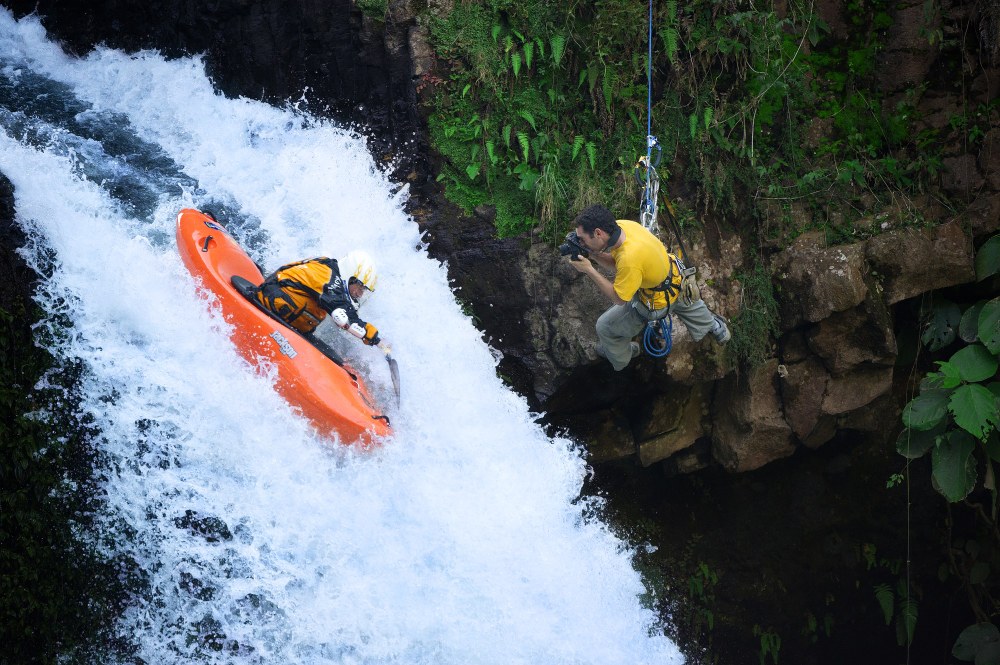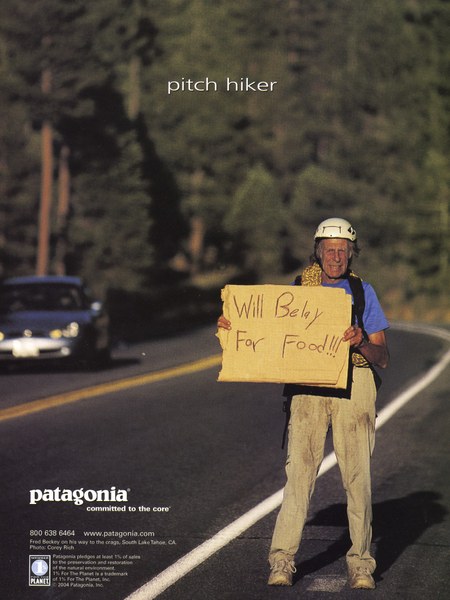
Corey Rich’s images are among the most recognized in adventure sports photography. His career began in the ’90s when, as a college kid, he traveled the country in a beat-up Honda Civic, photographing rock climbers. As his skills and reputation grew along with the popularity of climbing and other adventure sports, Corey was there to tell the stories of some of the world’s best athletes. His new book is Stories Behind the Images: Lessons from a Life in Adventure Photography (available now), and we recently caught up with him to ask Corey about his career and his new book.
Your career has spanned most of the modern era in adventure sports. What are the biggest things that have changed for photographers since you started out?
I’ve seen so many changes from a technology perspective, as cameras have transitioned from film to digital, DSLR to mirrorless, and to cameras that can shoot incredibly high quality still and motion files in tandem. But despite all of those advances, what remains is that old adage that content is king. If you’re not consciously telling a good story with your camera, all of the technology in the world won’t help you. One of the biggest changes, however, is the way our content is shared. Magazines used to be how careers were made. Now, for better and worse, it’s done through an ability to build a social media audience. At the end of the day, in my view the opportunities have only increased and gotten better for photographers and filmmakers.
When we think of the typical photography book it’s usually a display of images, but your book has lots of narrative. What are you trying to accomplish with this project?
I wanted this book to be approachable, and give readers the sense that they were sitting next to me at a campfire, hearing some stories about my life and career. I wrote the chapters to stand alone, more or less, so that you can jump around and read a chapter, be entertained, and hopefully come away with something new to think about. But taken all together, this book really is a memoir of my life and career thus far. I hope it’s a unique, interesting way of approaching this genre.
 Fred Beckey. Photo by Corey Rich.
Fred Beckey. Photo by Corey Rich.
Lots of people see an amazing photo of an athlete in action and wonder, where the hell was the photographer that he or she could get that image? Is that actually the secret sauce to your job?
The secret is that there is no secret. It takes a lot of hard work to get into any position that’s unique and compelling. The reason that climbing photography is often so striking is that it offers a perspective most people never get to see. And there’s a reason for that: getting into that position — say, 2,000 feet up the side of El Capitan — isn’t very easy. You have to understand the ropes, and be willing to take a bit of risk. But the reward is hopefully an arresting photograph.
For many fans you appear to have a “dream job.” What gives you the most job satisfaction?
Two things come to mind. The first are the relationships that I form with the people I photograph. I get to create stories and content surrounding amazing athletes with incredible drive. The fact that some of that ambition and drive rubs off on me is one of the best perks. But the real reward is that many of these people have become my lifelong friends.
The other satisfying part of my job is that I get to pay it forward, and give back to fellow photographers. Teaching and mentorship is a big part of what I do. I’ve made this a priority in part because my dad was a teacher, but also because I’ve had so many wonderful mentors over the years. Sharing information, whether that’s through lectures or clinics or online videos and courses, and providing opportunities to up-and-coming photographers is immensely satisfying.
This article originally appeared in our Fall 2019 issue of Mountaineer Magazine. To view the original article in magazine form and read more stories from our publication, click here.
 Doug Canfield
Doug Canfield